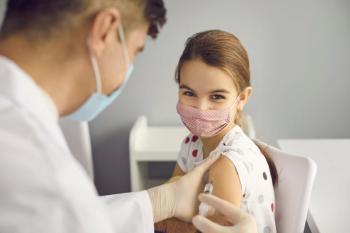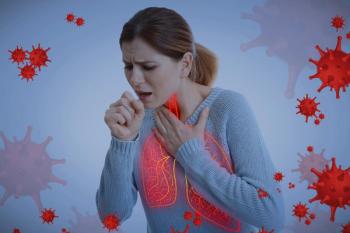
Wastewater Surveillance Key Tool in Mitigating COVID-19 Transmission Risk at Schools
A new study found that SARS-CoV-2 RNA was correlated with incident COVID-19 cases at the school level.
Implementing wastewater surveillance at the school level may help administrators make better decisions when it comes to COVID-19 risk and public health interventions that could mitigate its transmission, according to new research published in the journal PLOS Global Public Health.1
During the COVID-19 pandemic, schools all over the country closed as part of the public health measure to halt transmission. While school closures may be necessary, most schools were shut down before any COVID-19 cases were detected. Many studies have now found that the mass school closings resulted in significant reductions in learning for students.1
“Wastewater surveillance will probably work for most infectious diseases, including the next public health emergency threat,” David Larsen, an author on the study, said in a release.2 “With wastewater surveillance in schools, we may be able to keep the schools open longer and respond specifically to outbreaks rather than implement broad closures.”
Investigators from Syracuse University conducted a study to assess the potential for wastewater surveillance to be deployed at the school level. Data was gathered from a school district located in Jefferson County, New York during the 2021 through 2022 school year. Investigators tested for SARS-CoV-2 RNA once weekly and compared the results to the amount of COVID-19 cases in the school.
Investigators found that of 28 wastewater samples collected, 9 had detectable levels of SARS-CoV-2 RNA and 18 had quantifiable levels. The amount of RNA correlated with incident COVID-19 cases and the best correlation was found to be a 1 day lead time between when the sample was collected and the number of COVID-19 cases in the school.
Additionally, the sensitivity and positive predictive value of wastewater surveillance to correctly identify any COVID-19 cases up to 7 days after a wastewater sample collection ranged from 82% to 100% and 59% to 78%, respectively.
Researchers noted that while the study data suggests that transmission could occur in a school before SARS-CoV-2 is identified in wastewater, surveillance should still be considered a key tool to understand COVID-19 trends at the school level.
Study limitations include that wastewater samples were only collected once a week which could have left a gap in surveillance, that clinical COVID-19 testing was not required by the school, and that wastewater samples were homemade.
“The practicality of wastewater surveillance as an early warning tool heavily relies on timely reporting and swift actions following a positive sample," Haley Kappus-Kron, lead author on the study, said in a release.2 "Nevertheless, in the absence of mass asymptomatic testing, wastewater surveillance presents an appealing and cost-effective approach to understand disease trends within school environments."
References
1. Kappus-Kron H, Chatila DA, MacLachlan AM, et al. Precision public health in schools enabled by wastewater surveillance: A case study of COVID-19 in an Upstate New York middle-high school campus during the 2021-2022 academic year. PLOS Glob Public Health. 2024;4(1):e0001803. Published 2024 Jan 10. doi:10.1371/journal.pgph.0001803
2. Study reveals wastewater surveillance is key tool in keeping schools open during public health emergencies. News Release. Syracuse University. January 12, 2024. Accessed January 12, 2024. https://news.syr.edu/blog/2024/01/12/study-reveals-wastewater-surveillance-is-key-tool-in-keeping-schools-open-during-public-health-emergencies
Newsletter
Pharmacy practice is always changing. Stay ahead of the curve with the Drug Topics newsletter and get the latest drug information, industry trends, and patient care tips.

















































































































